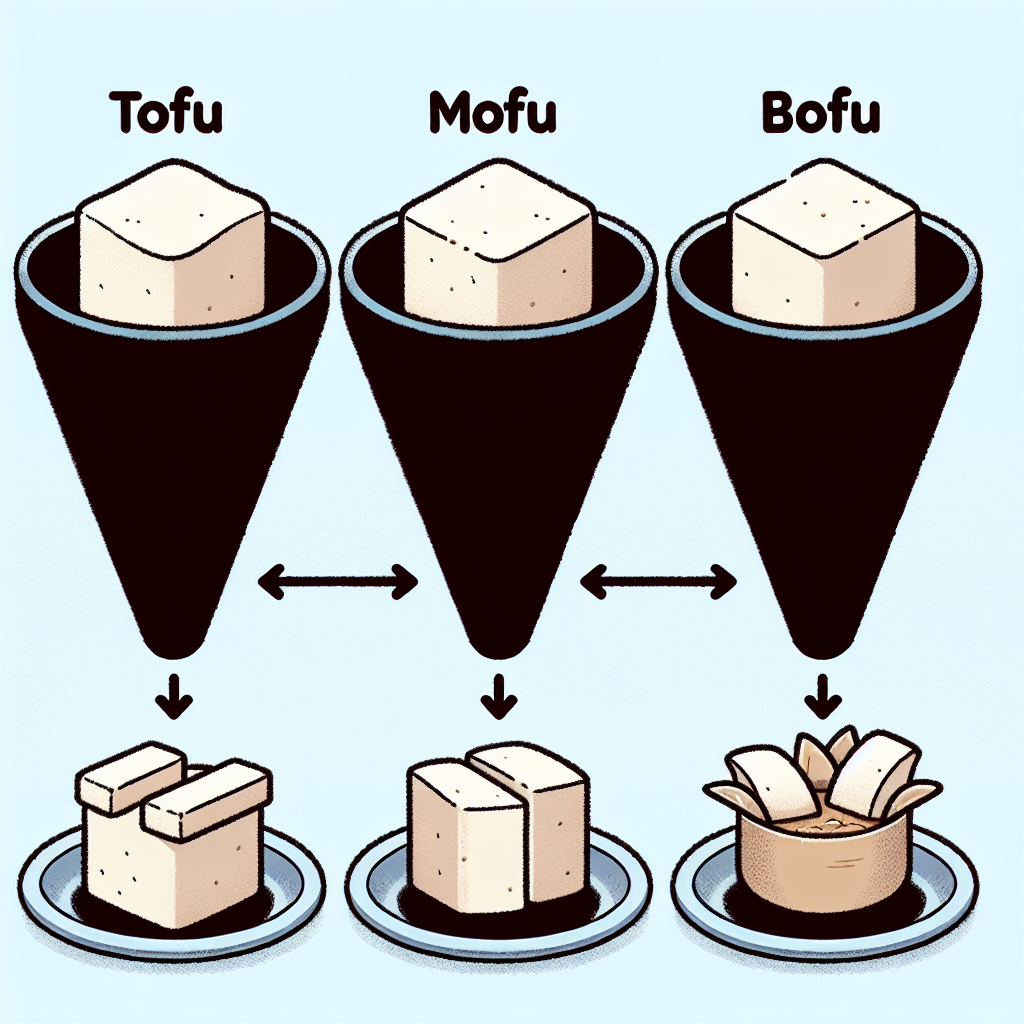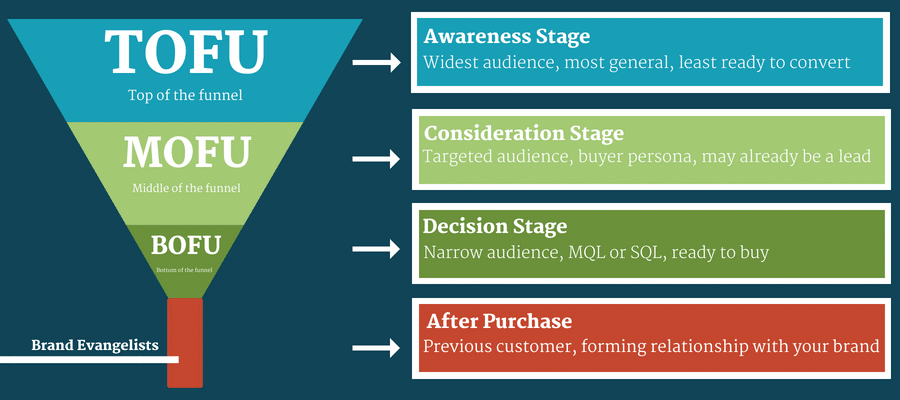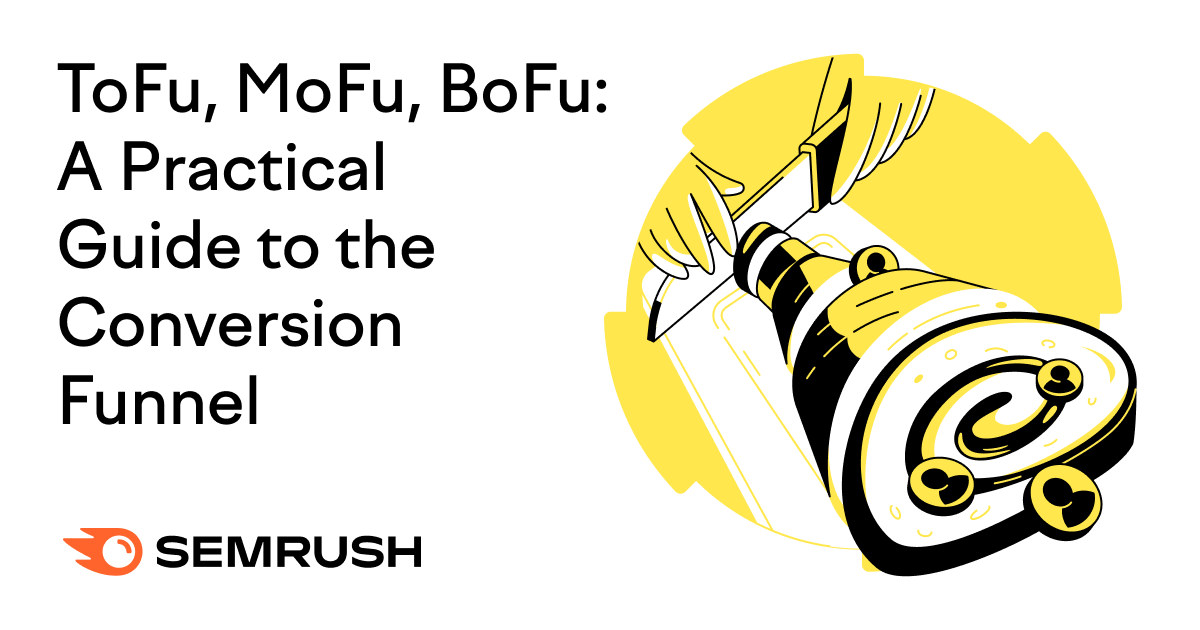Uncover the secrets of TOFU, MOFU, and BOFU in this practical guide to mastering the conversion funnel. Don’t miss out!

Image courtesy of via DALL-E 3
Table of Contents
Welcome to a practical guide on the conversion funnel! Have you ever wondered how businesses attract customers and convince them to buy their products or services? Well, that’s where the conversion funnel comes into play! In this guide, we will break down the concept of the conversion funnel into three key stages: TOFU (Top of the Funnel), MOFU (Middle of the Funnel), and BOFU (Bottom of the Funnel). By understanding each stage, you will learn how businesses guide people from just knowing about a product to becoming loyal customers. Let’s dive in and explore the world of conversion funnels!
What is a Conversion Funnel?
Imagine you have a lemonade stand. At the top of the funnel (TOFU), people passing by become aware that your stand exists. In the middle of the funnel (MOFU), they start to get interested in your delicious lemonade. Finally, at the bottom of the funnel (BOFU), they make the decision to buy a refreshing cup from you. This process of guiding people through these stages is what we call the conversion funnel.
Why TOFU, MOFU, and BOFU?
TOFU, MOFU, and BOFU are like the building blocks of a successful business. Each stage plays a crucial role in attracting more customers and turning them into loyal fans. TOFU helps in creating awareness about your product, MOFU builds interest in it, and BOFU seals the deal by convincing people to make a purchase. Together, these stages form a dynamic pathway that leads to business growth and success.
TOFU: Top of the Funnel
Creating Awareness
In the top part of the conversion funnel, known as TOFU, our main goal is to let people know that our product or service exists. Imagine setting up a lemonade stand in your neighborhood. Before anyone can decide to buy a cup of refreshing lemonade, they first need to know that your stand is there offering this tasty treat. This initial stage is all about creating awareness.
Content Ideas for TOFU
So, how do we get the word out? We can use various methods like colorful flyers, catchy ads on social media, or fun videos showcasing our tasty lemonade. When you see an exciting video about a new toy or a yummy snack online, that’s someone working on their TOFU strategy to get you interested.
MOFU: Middle of the Funnel
Now that we’ve moved past the TOFU stage where people are aware of your product, it’s time to focus on building their interest. This is where the MOFU (Middle of the Funnel) comes into play. The goal here is to engage with those who already know about your product and show them why it’s awesome.
One effective way to do this is by providing user reviews. These are testimonials from people who have already used your product and can vouch for its quality. Seeing positive feedback from real customers can go a long way in convincing others to give your product a try.
Another strategy for the MOFU stage is to use comparison charts. These charts highlight the key features and benefits of your product compared to others in the market. By showcasing what makes your product stand out, you can help potential customers see why it’s the best choice for them.
Content Ideas for MOFU
When it comes to creating content for the MOFU stage, you want to provide more detailed information that helps potential customers make informed decisions. Some content ideas that work well for this stage include how-to guides. These guides walk users through the process of using your product or service, demonstrating its value and usability.
Another idea is to create detailed blog posts that delve deeper into the features and benefits of your product. By providing in-depth information, you can address any lingering questions or concerns potential customers may have, ultimately helping them feel more confident in their decision to purchase.
Lastly, consider offering eBooks that provide even more information about your product or industry. This can help establish your authority and expertise, building trust with potential customers and nudging them closer to making a purchase.
BOFU: Bottom of the Funnel
At the bottom of the funnel (BOFU), the main goal is to encourage people to make the decision to buy your product or service. This is where you want to seal the deal and turn potential customers into actual buyers. To do this, businesses use various strategies to push customers towards making a purchase.

Image courtesy of www.webascender.com via Google Images
Content Ideas for BOFU
When it comes to the bottom of the funnel (BOFU), it’s all about providing potential customers with the information they need to feel confident in their decision to buy. Content ideas for this stage include detailed product demonstrations that showcase the key features and benefits of your offering. Case studies can help potential buyers see real-world examples of how your product has helped others. Additionally, testimonials from satisfied customers can provide social proof and build trust in your brand.
Connecting TOFU, MOFU, and BOFU
When we talk about connecting TOFU, MOFU, and BOFU, we are essentially focusing on creating a seamless journey for customers from the moment they become aware of a product to the point where they make a purchase. It’s important for businesses to ensure that each stage flows smoothly into the next to provide a consistent and enjoyable experience for the customer.
Imagine walking through a theme park where each ride transitions effortlessly into the next, keeping you engaged and excited throughout your journey. That’s how businesses should aim to connect their conversion funnel stages, making sure that customers feel guided and supported every step of the way.
Funnel Strategy Example
Let’s take the example of planning a lemonade stand campaign to understand how TOFU, MOFU, and BOFU can work together seamlessly. At the top of the funnel (TOFU), you set up a bright and eye-catching lemonade stand to attract potential customers. You create awareness by showcasing your delicious lemonade and offering free samples to passersby.
As customers move into the middle of the funnel (MOFU), you engage them further by sharing testimonials from satisfied lemonade drinkers and providing information on the health benefits of fresh-squeezed lemons. You build interest and show them why your lemonade is the best choice on a hot summer day.
Finally, at the bottom of the funnel (BOFU), you offer a special deal where customers can buy one lemonade and get the second one half off. This encourages them to make the decision to purchase your refreshing drink. By connecting TOFU, MOFU, and BOFU effectively in this lemonade stand campaign, you create a successful and satisfying experience for your customers.
Benefits of a Well-Designed Funnel
Having a well-designed conversion funnel can bring numerous benefits to businesses. Let’s explore how an effective funnel can help companies attract more customers and drive sales growth.
More Customers
One of the key benefits of a well-designed conversion funnel is the ability to attract more customers. By guiding potential buyers through the stages of awareness, consideration, and decision-making, businesses can provide the right information at the right time. This targeted approach helps to nurture leads and convert them into loyal customers.
Growing Sales
Another advantage of an effective conversion funnel is the ability to increase sales. A carefully crafted funnel can lead customers through each stage seamlessly, providing them with the information and incentives needed to make a purchase. By optimizing the customer journey, businesses can see significant growth in sales and revenue.
Challenges and How to Overcome Them
One common challenge businesses face when setting up a conversion funnel is identifying where things might be going wrong. It’s important to analyze each stage of the funnel to see where potential customers might be dropping off. For example, if you notice a significant drop-off after people visit your website but before they make a purchase, there may be an issue with the effectiveness of your middle or bottom-of-the-funnel strategies.

Image courtesy of www.linkedin.com via Google Images
Optimizing Each Stage
To overcome challenges in your conversion funnel, focus on optimizing each stage. This means continuously improving your content and strategies to better engage potential customers. For instance, if you find that your top-of-the-funnel content isn’t attracting enough attention, try experimenting with different types of content like videos or infographics. Similarly, if your bottom-of-the-funnel efforts aren’t converting as expected, consider offering more enticing incentives or simplifying the purchasing process.
Tools to Help with Your Funnel
When it comes to creating and optimizing your conversion funnel, there are several tools available to assist you in the process. These tools can help track the performance of your funnel, automate certain tasks, and ultimately improve your overall strategy. Let’s take a look at some of the most important tools you can use:
Analytics Tools
If you want to understand how well your conversion funnel is working, analytics tools are essential. One of the most popular tools for this purpose is Google Analytics. It allows you to track important metrics like website traffic, conversion rates, and user behavior. By analyzing this data, you can identify areas of improvement and make informed decisions to optimize your funnel.
Automation Tools
Automation tools can help streamline your funnel by automating repetitive tasks and communication with customers. For instance, email marketing platforms like Mailchimp or automation tools like Zapier can send automated messages to customers based on their behavior, ensuring they receive relevant information at the right time. By automating certain aspects of your funnel, you can save time and resources while providing a more personalized experience for your customers.
Conclusion
In conclusion, understanding the concept of the conversion funnel with TOFU, MOFU, and BOFU is crucial for businesses looking to attract and convert customers effectively. By breaking down the customer journey into these stages, companies can tailor their marketing strategies to address the unique needs and behaviors of consumers at each point.

Image courtesy of www.semrush.com via Google Images
Wrap-Up
TOFU, or the Top of the Funnel, focuses on creating awareness and attracting potential customers. MOFU, the Middle of the Funnel, aims to engage customers and build their interest in the product. Finally, BOFU, the Bottom of the Funnel, guides customers towards making a purchase decision.
By recognizing the importance of each stage and crafting targeted content and strategies for TOFU, MOFU, and BOFU, businesses can optimize their conversion funnel for maximum effectiveness.
Encouragement
To our young readers, we encourage you to apply the knowledge shared in this guide to create your own conversion funnel for any project or endeavor you take on. Remember, understanding your audience and guiding them through the conversion process can lead to successful outcomes. Good luck!
Want to turn these SEO insights into real results? Seorocket is an all-in-one AI SEO solution that uses the power of AI to analyze your competition and craft high-ranking content.
Seorocket offers a suite of powerful tools, including a Keyword Researcher to find the most profitable keywords, an AI Writer to generate unique and Google-friendly content, and an Automatic Publisher to schedule and publish your content directly to your website. Plus, you’ll get real-time performance tracking so you can see exactly what’s working and make adjustments as needed.
Stop just reading about SEO – take action with Seorocket and skyrocket your search rankings today. Sign up for a free trial and see the difference Seorocket can make for your website!
Frequently Asked Questions (FAQs)
What if my funnel isn’t working?
If you find that your conversion funnel isn’t working as expected, don’t worry! It’s common to face challenges along the way. One approach to troubleshooting underperforming parts of your funnel is to analyze the data and identify where potential drop-offs are occurring. By pinpointing weak spots, you can make targeted improvements to optimize those stages. Additionally, seeking feedback from customers or conducting A/B testing can provide valuable insights to enhance the effectiveness of your funnel.
How long does it take to see results?
Results from your conversion funnel efforts can vary depending on various factors, such as your industry, target audience, and the strategies you implement. While there is no definitive timeline for when you will see results, consistent and strategic efforts typically yield improvements over time. It’s essential to stay patient and persistent in your approach, monitoring performance metrics and making necessary adjustments along the way to drive better outcomes.







